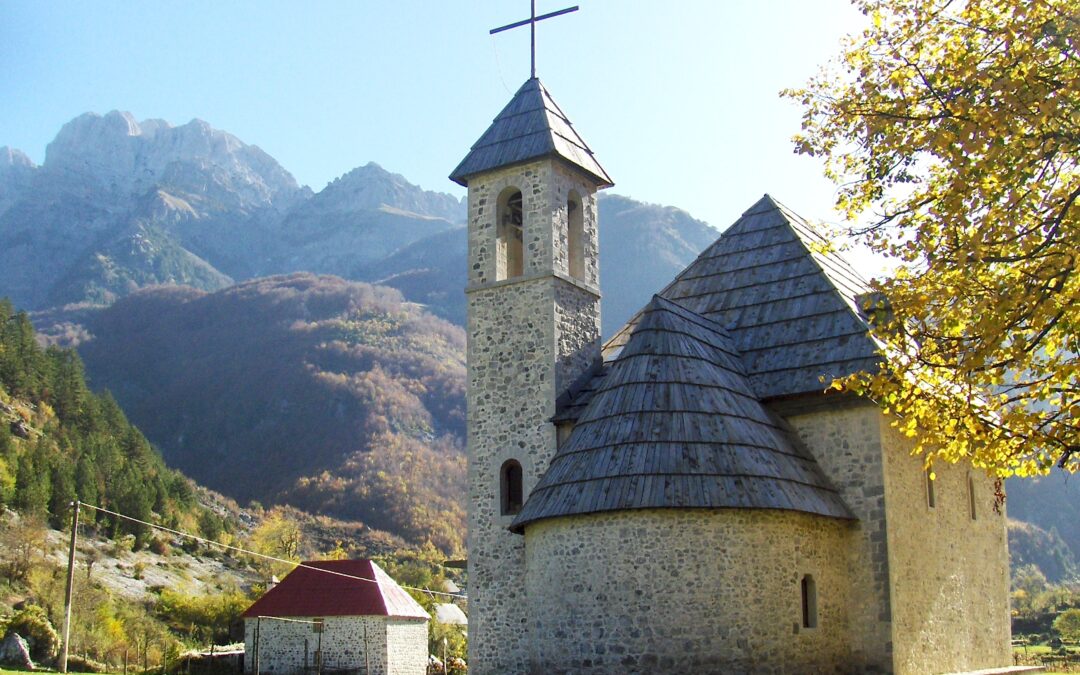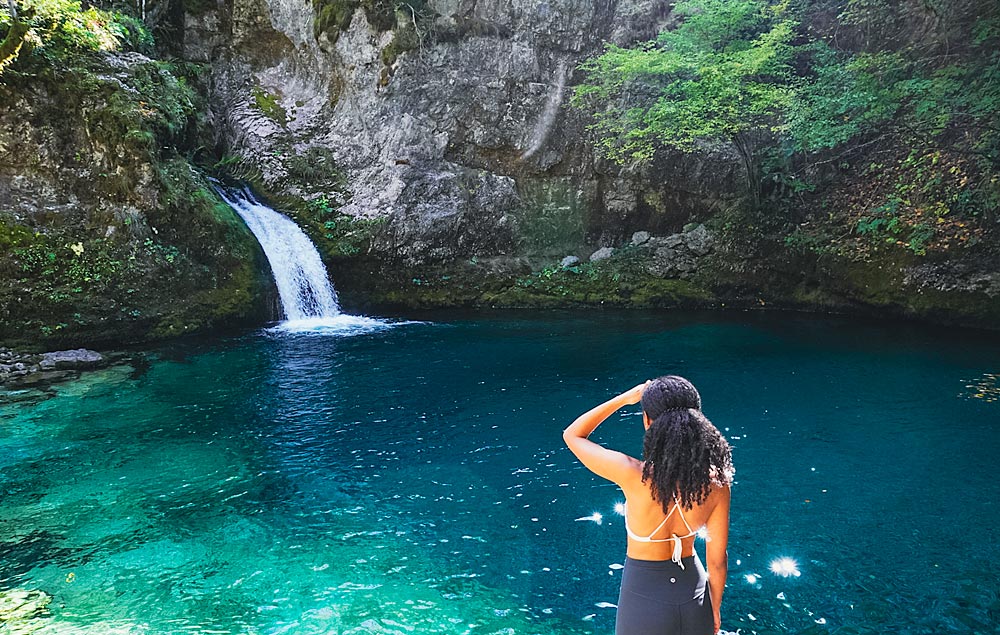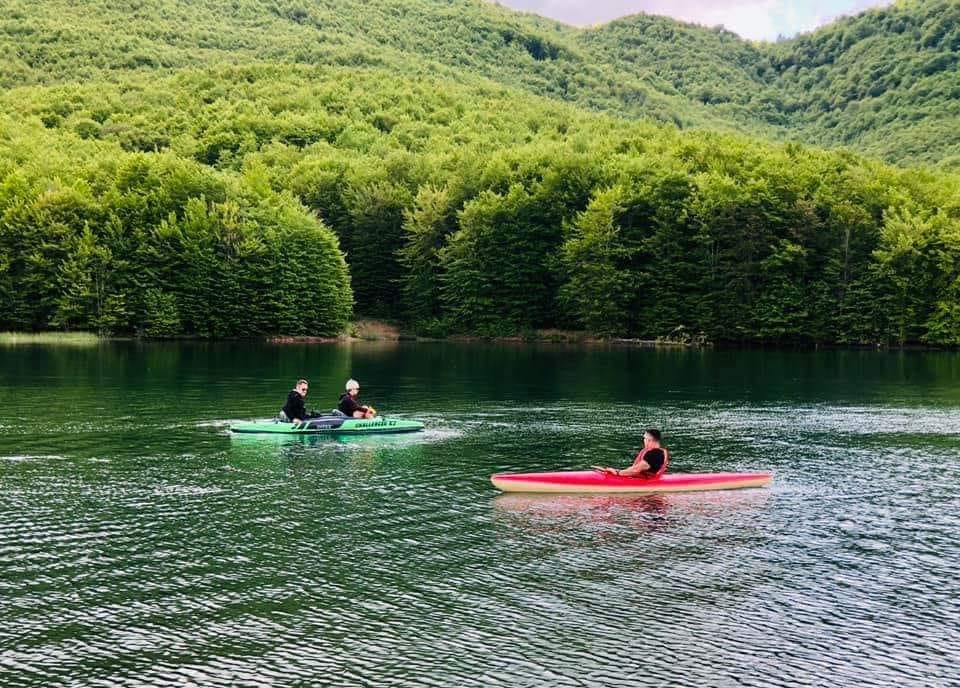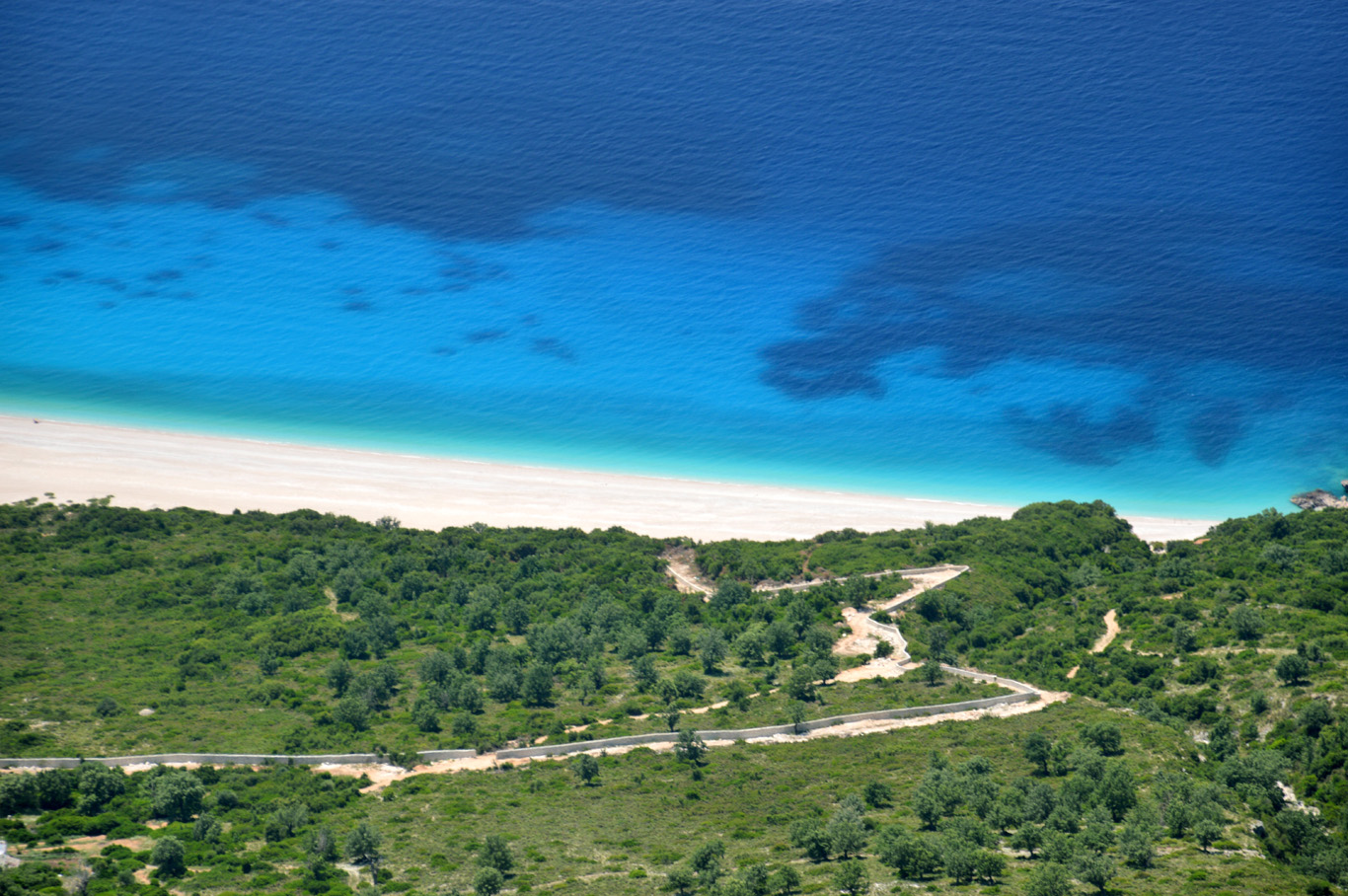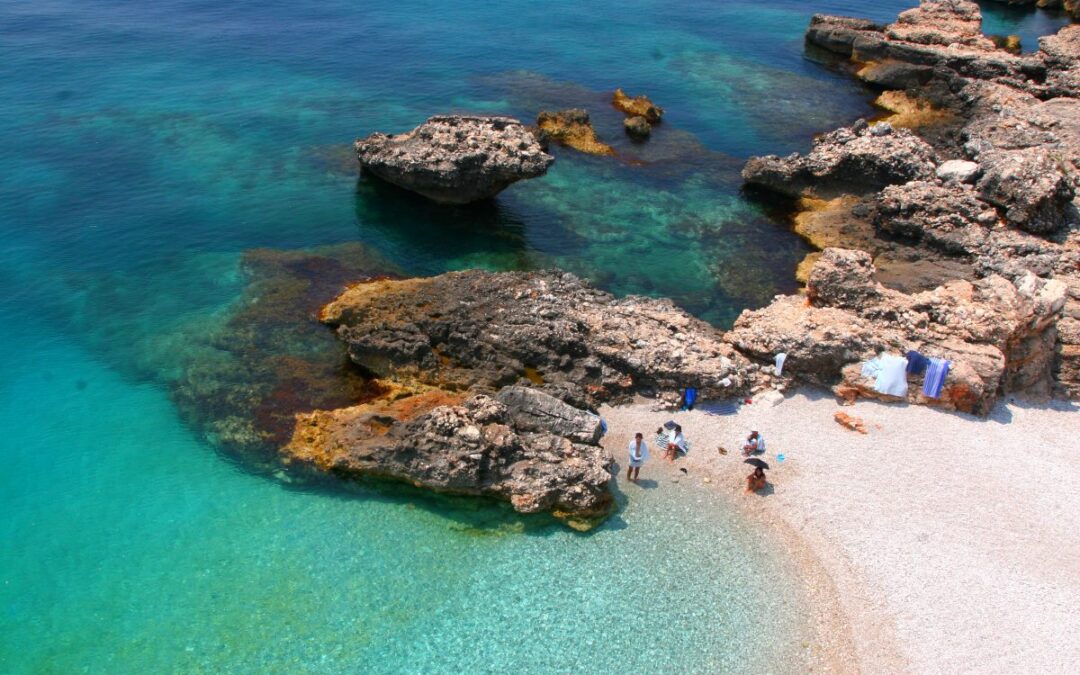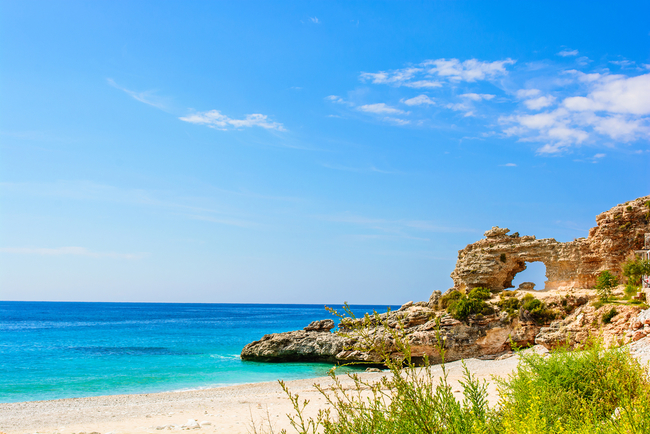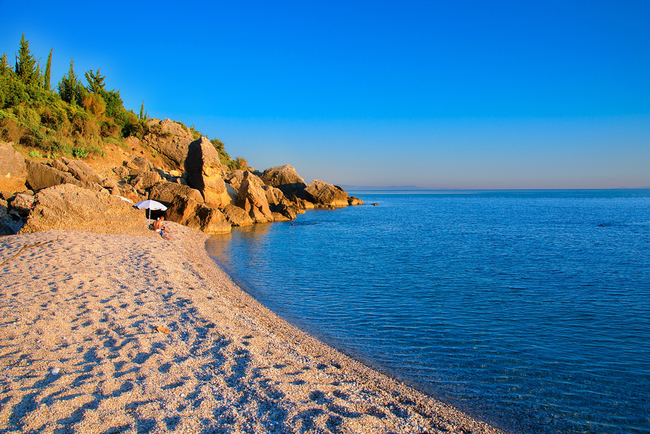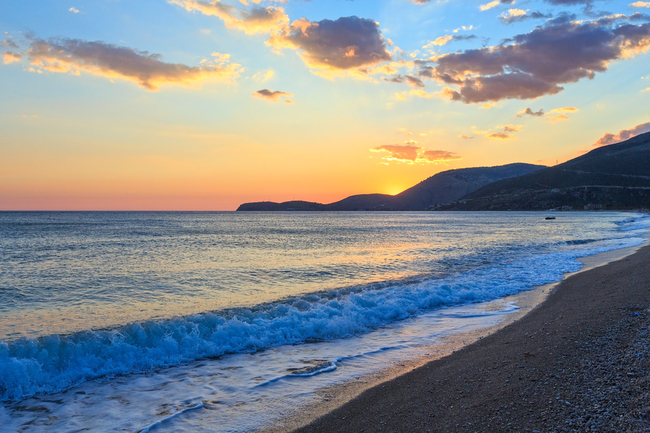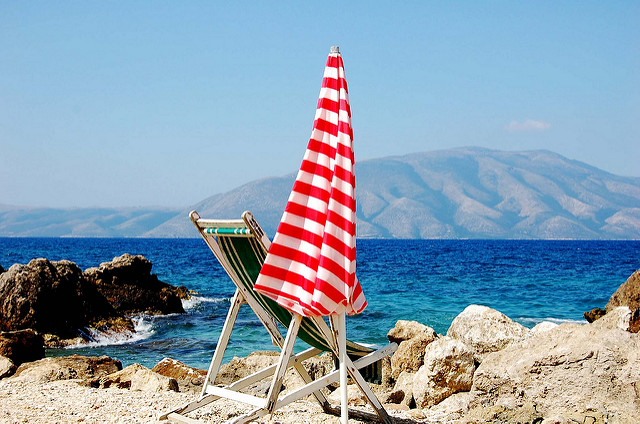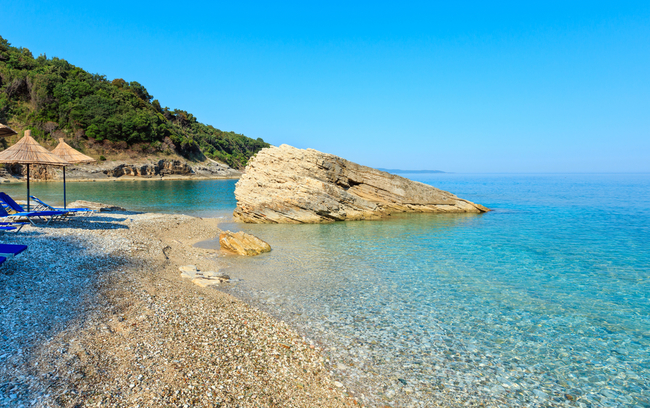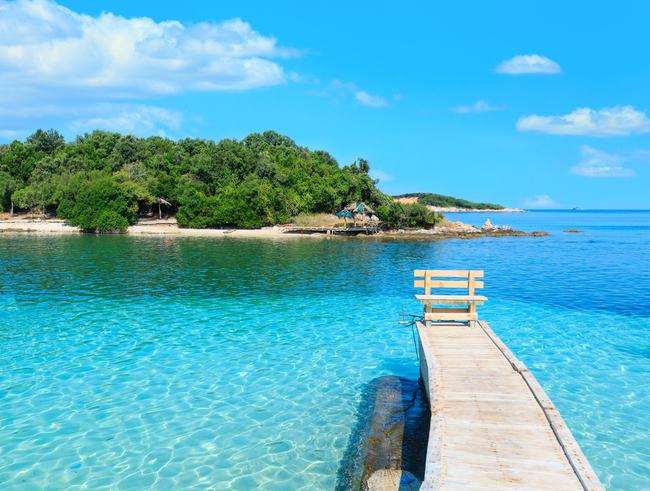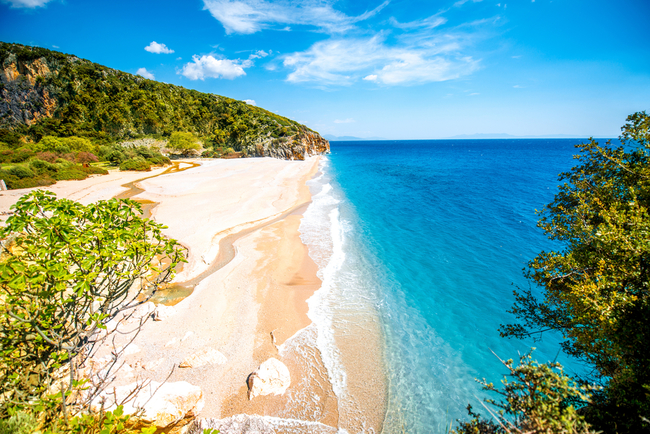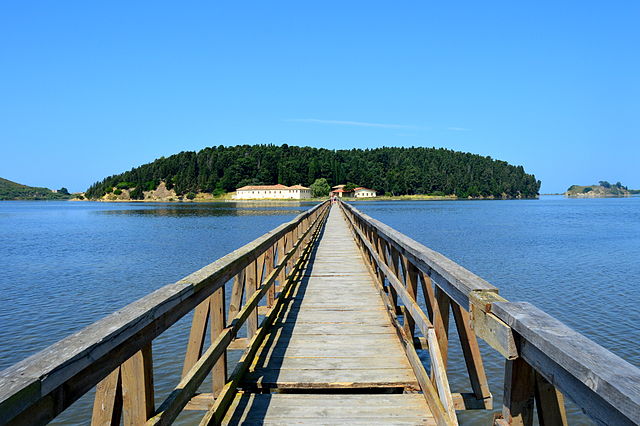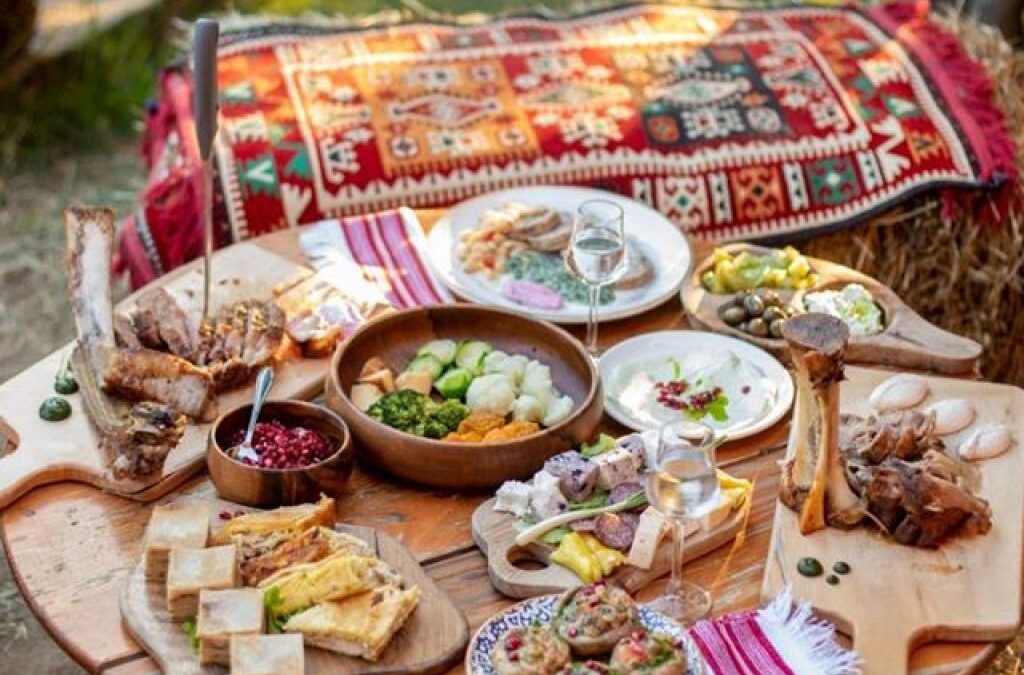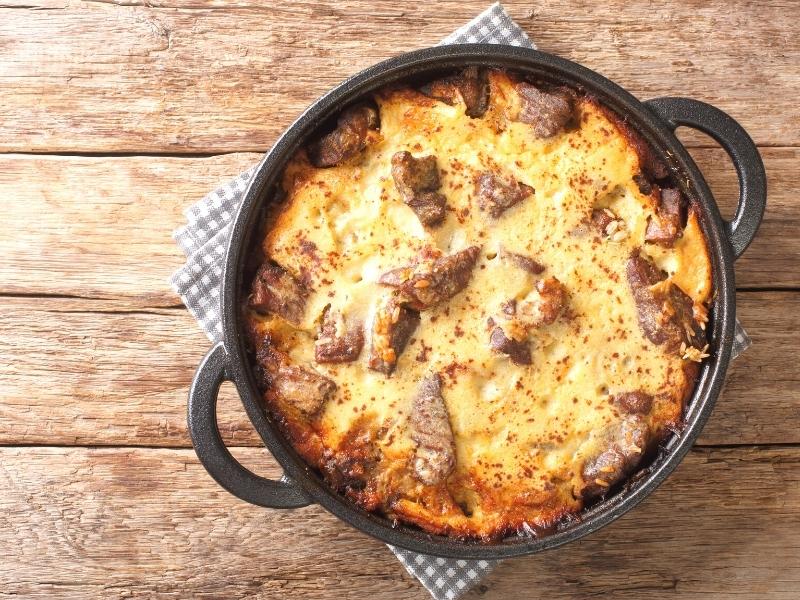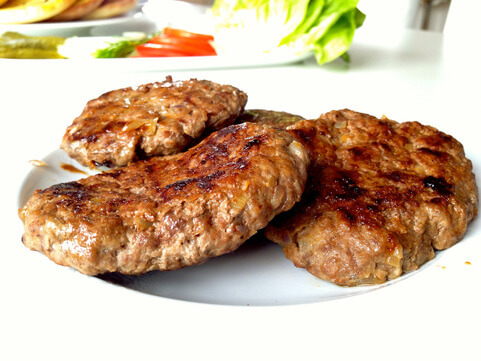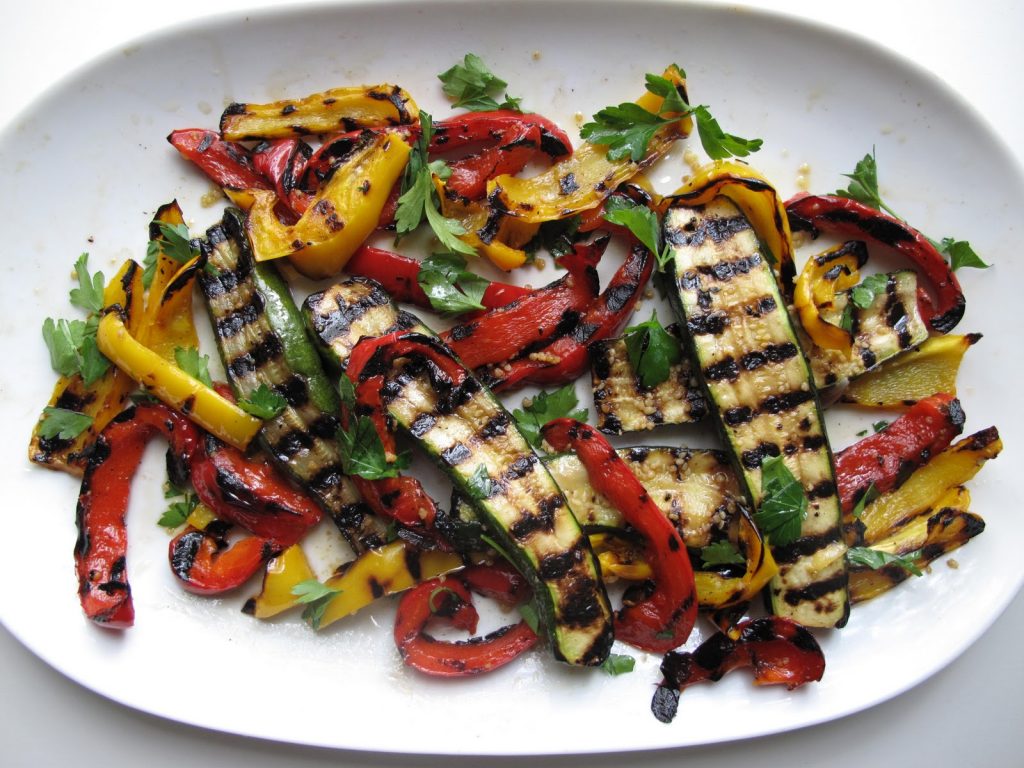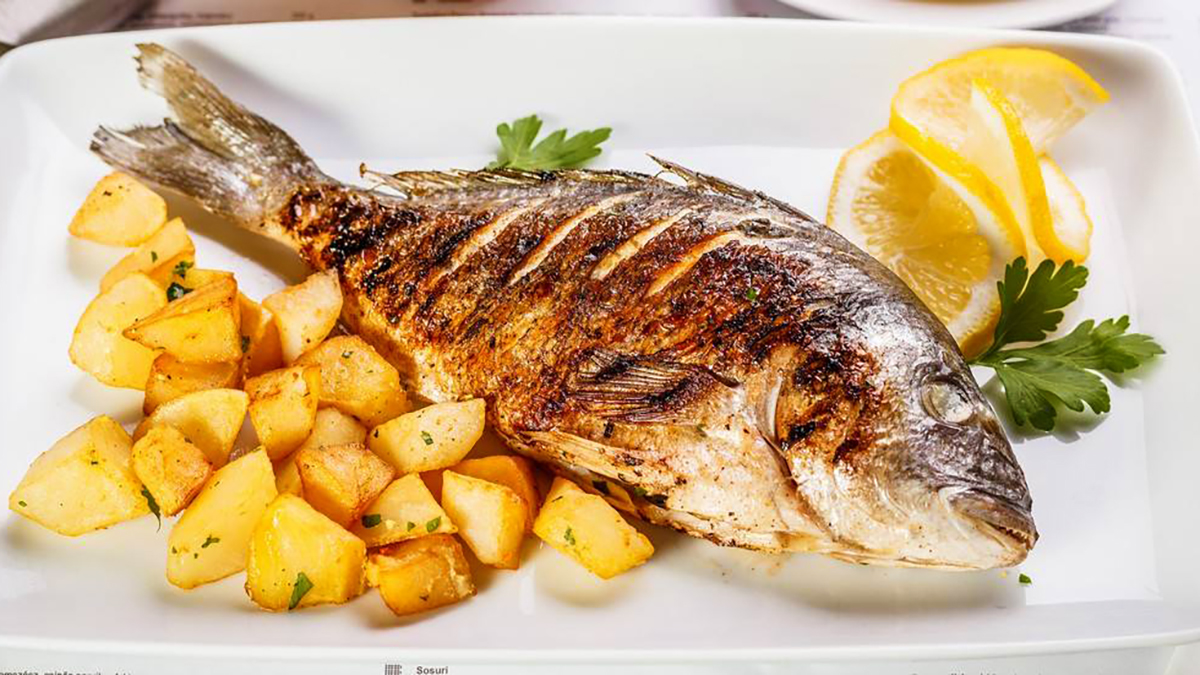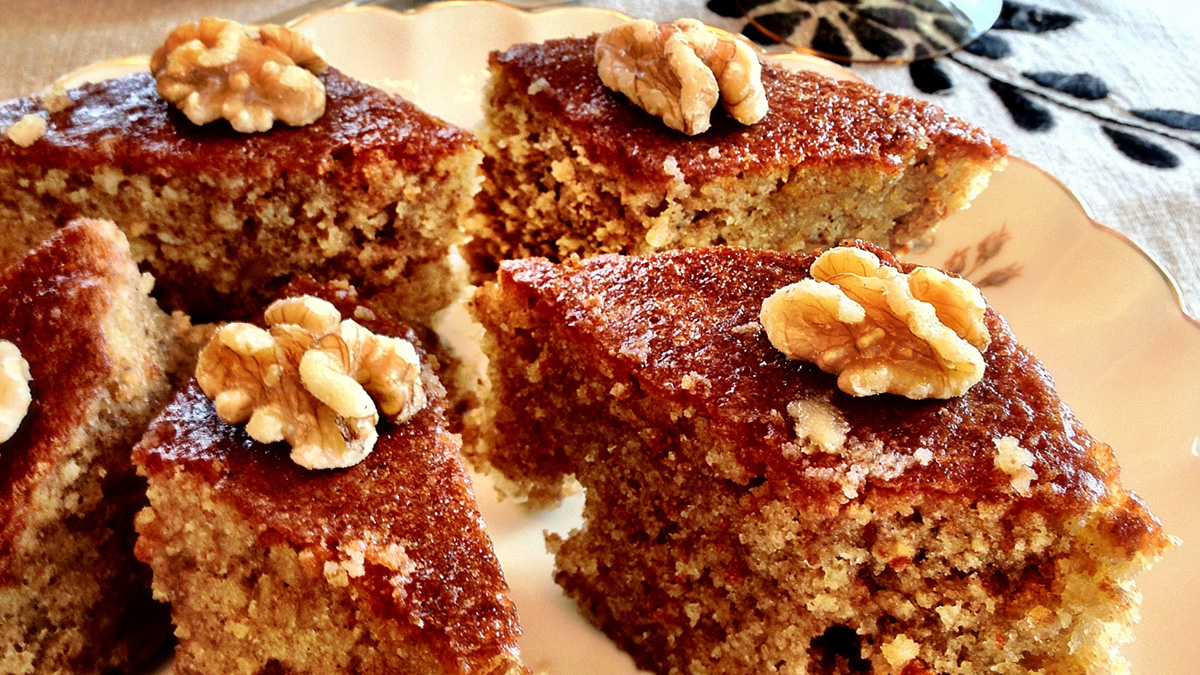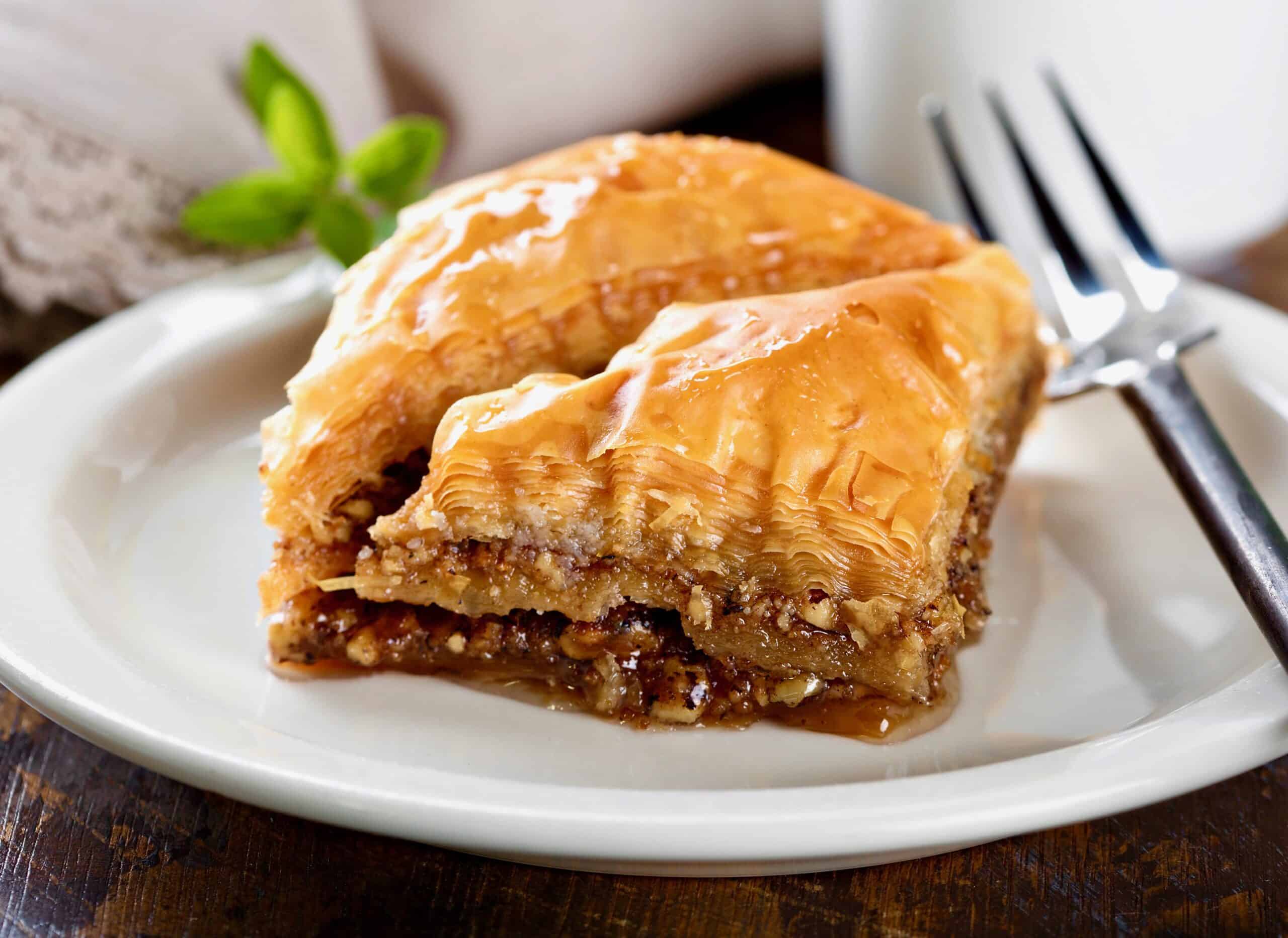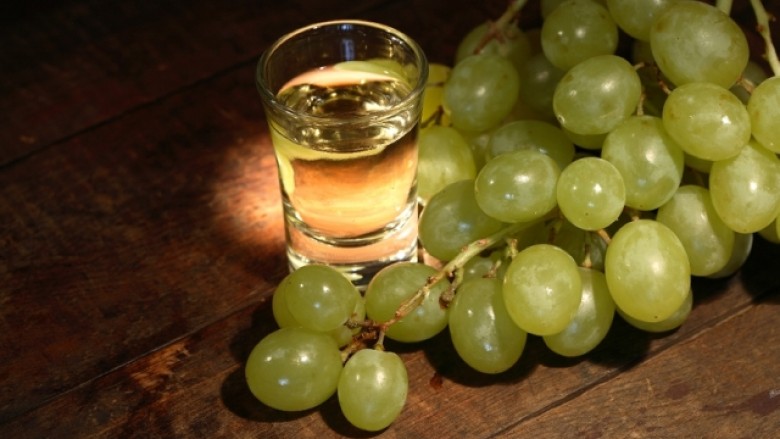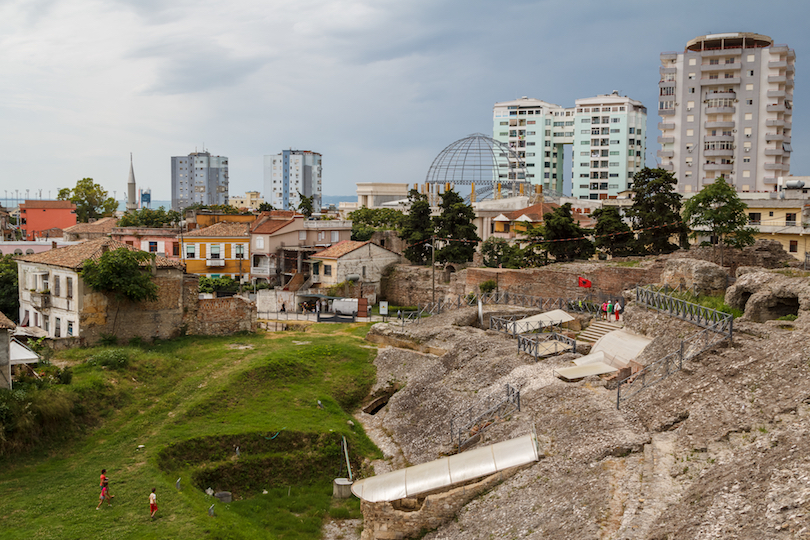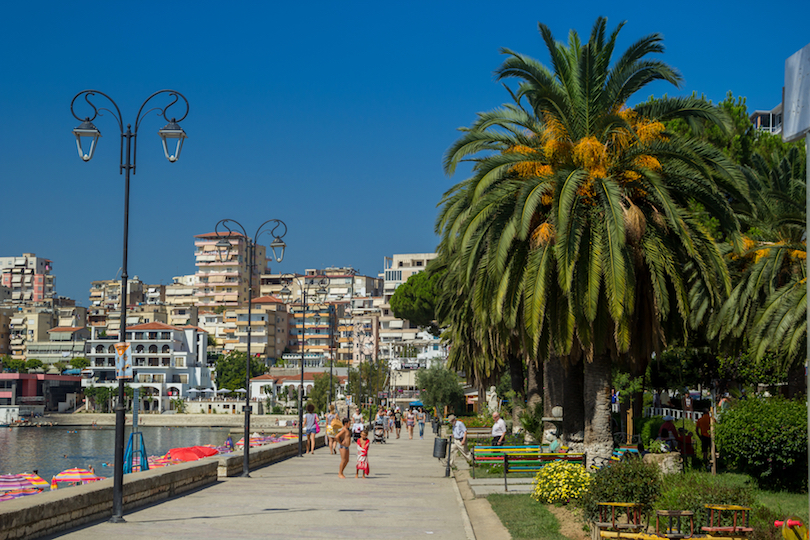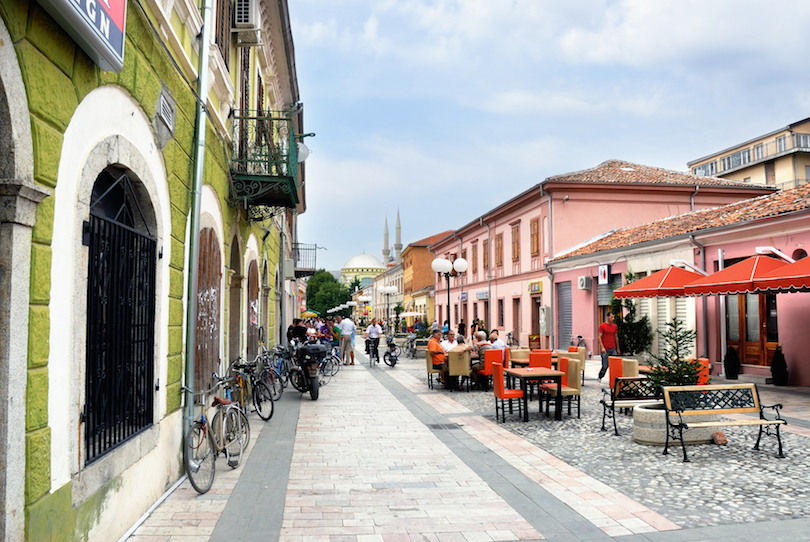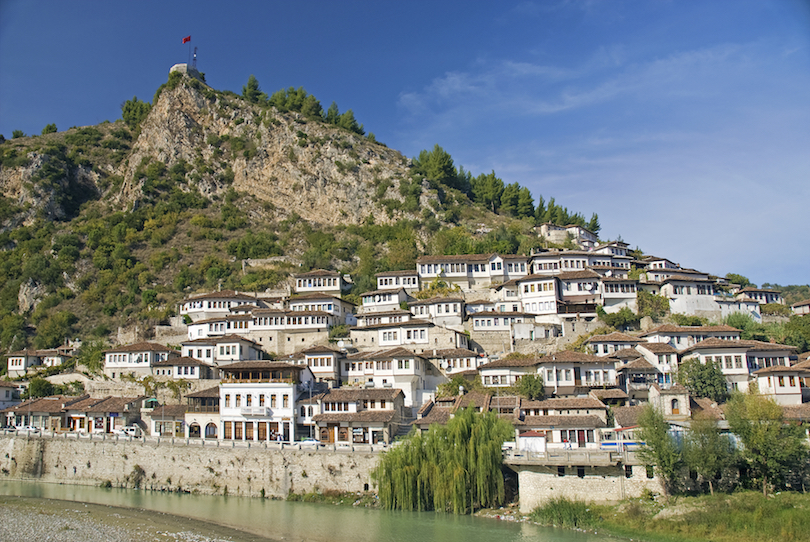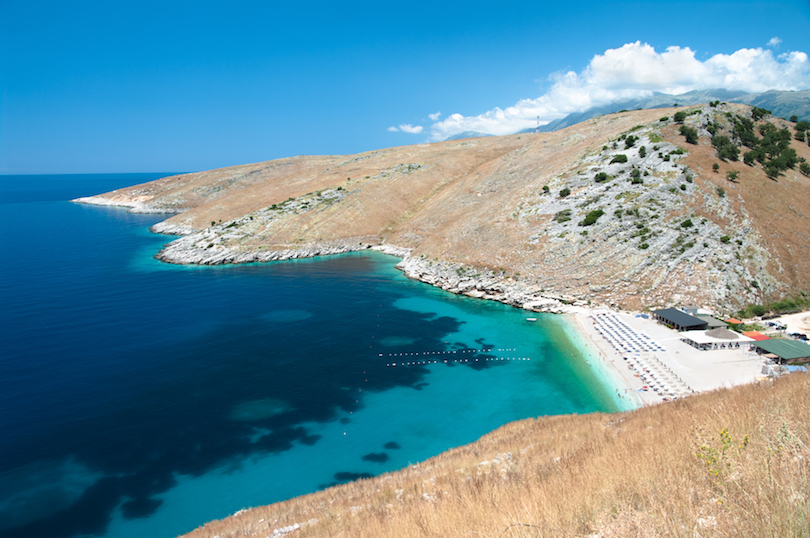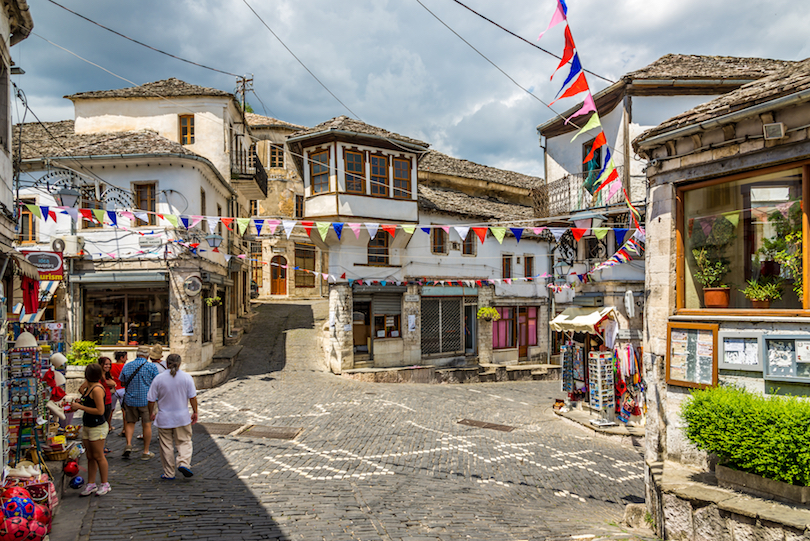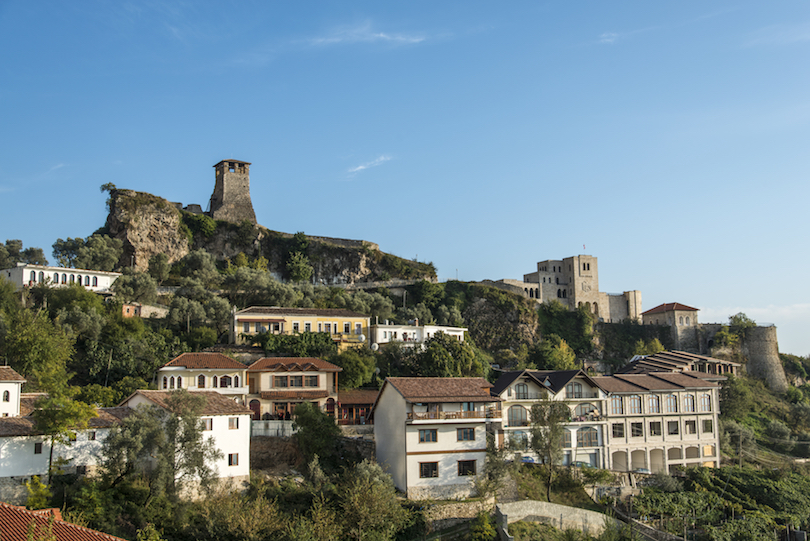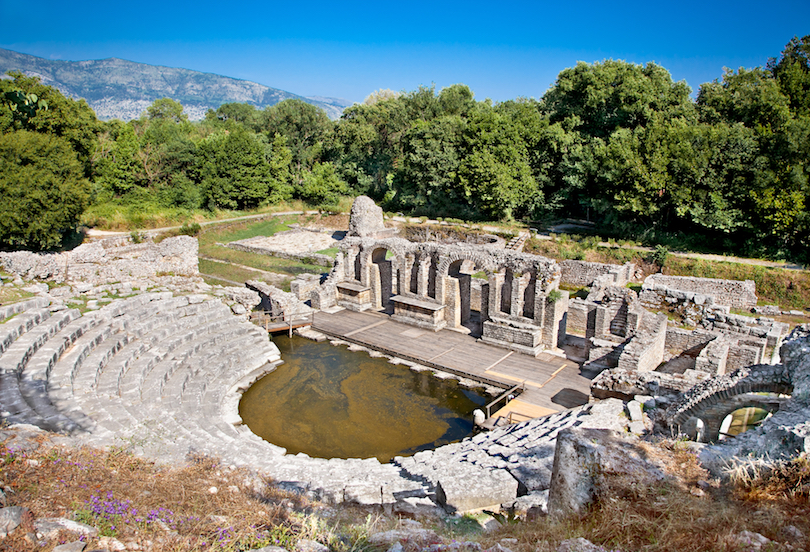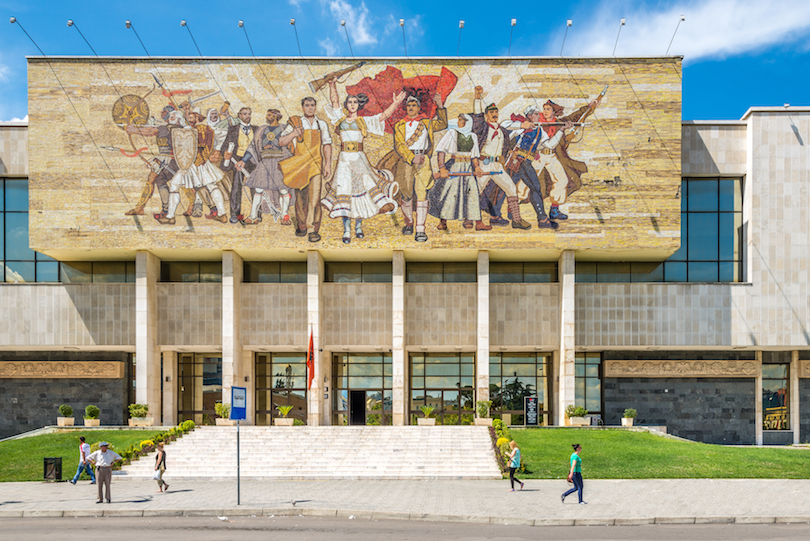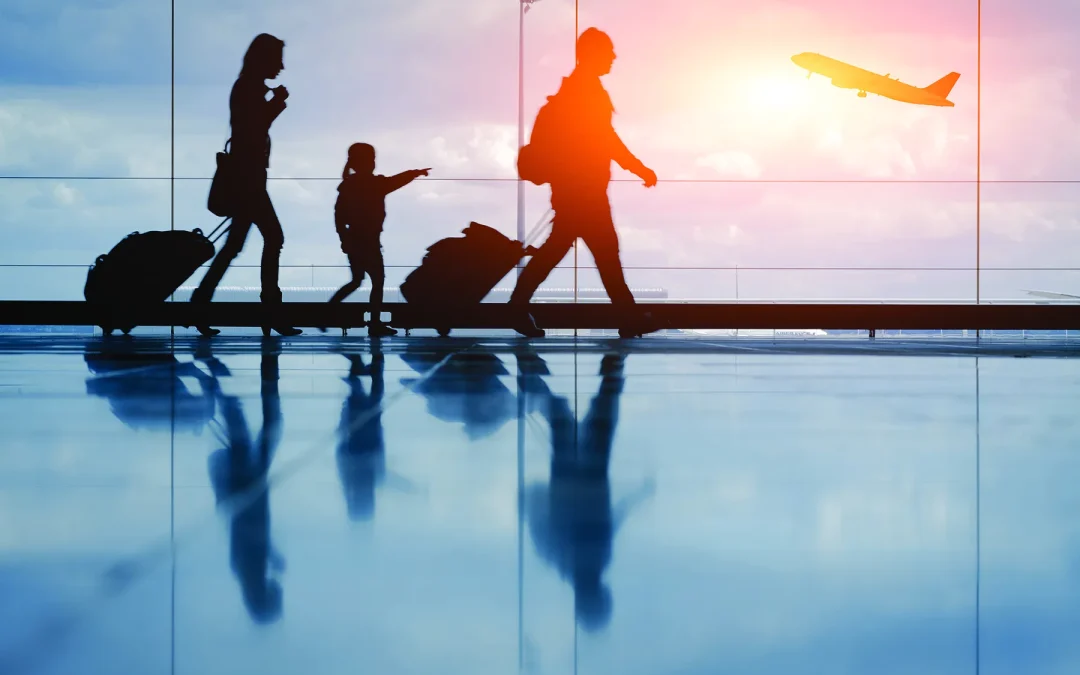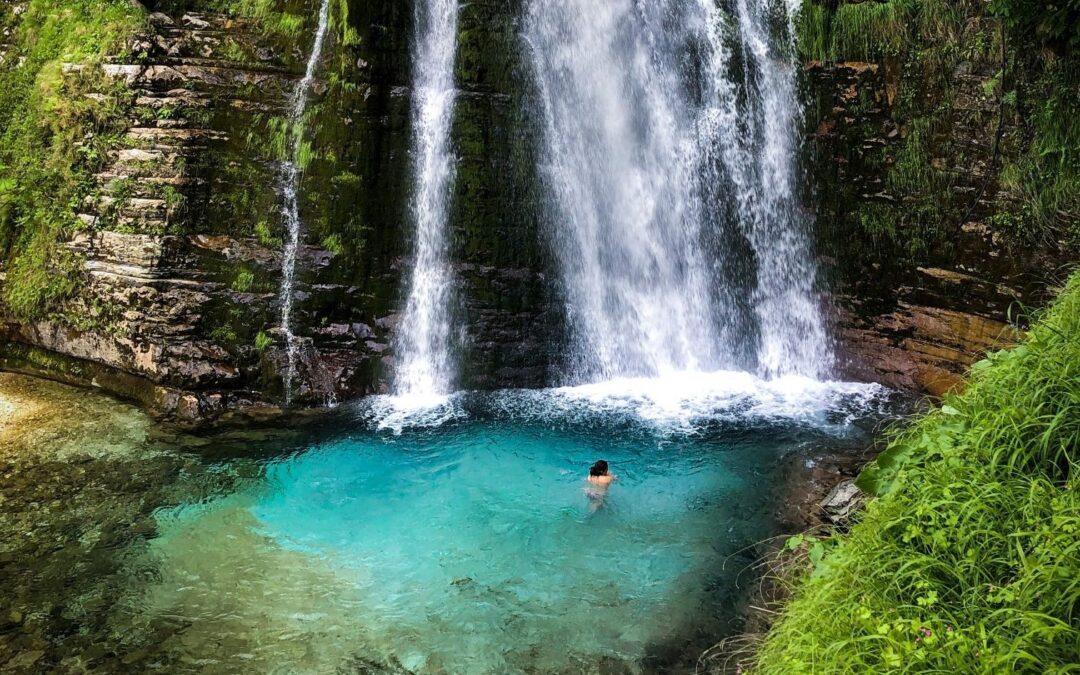
BEST CITIES TO VISIT IN ALBANIA

Fiori Travel,Best Travel Agency in Albania
Tirana
Piramida

It might seem strange to start with a derelict building, but the Piramida is unique. It’s an unforgettable and culturally-significant building from 1987, completed not long before the fall of communism. It was intended as a museum to honour the country’s despotic dictator Enver Hoxha who ruled from 1944-85, but naturally these plans were torn up after 1990. Now it’s at the crux of a debate on how to deal with the period after the Second World War, when Albania suffered 45 years of isolation. Some want to see it restored as a monument to that period, while others want it torn down. In the meantime it remains unused, except by graffiti artists and skaters.
Dajti Ekspres
This cable-car is a fun family day out and a superb introduction to the city, taking you up by gondola to the dramatic mountain on Tirana’s eastern edge. The cable-car spans a kilometre, making it the longest in the Balkans, and rises more than 800 metres up the mountainside. The journey will take about 15 minutes and at the top there’s a tourism complex with restaurants and hotels. Of course the view over the city will be memorable, but there are also year-round activities on the table, including trekking and horseback riding in summer, and skiing in winter.
Skanderbeg Square
This is where Tirana’s premier monuments are all assembled, including the Clock Tower, Et’hem Bey Mosque and the National History Museum. It is named after George Castriot, an Albanian national hero, credited with halting the advance of the Ottoman Empire into central Europe. There’s a monument to Skanderbeg in the square, which occupies the spot where a communist-era statue of Josef Stalin once stood. The architecture surrounding the square is neo-renaissance, and there’s a large lawn with flower beds to round off the stately atmosphere. Skanderbeg is the city’s main venue for popular celebrations, such as 100 years of Albanian Independence in 2012.
National Historic Museum
One thing’s for sure – Tirana and Albania have a very complicated past. So if you need a point of entry this is the place to get some context. The museum is organised by pavilions, each covering a different period in the region’s history, from ancient times up to the 21st century. The most valuable in terms of archaeological wealth is the Pavilion of Antiquity, where there’s a great collection of almost 600 items spanning the late-Palaeolithic to the early-Middle Ages. The most treasured exhibit is the Beauty of Durrës, which is from the 4th century BC and is the most cherished ancient mosaic in the country.
Dajti Mountain National Park
In Europe it’s unusual to find a national park right on the doorstep of a capital city, so don’t pass up the chance to venture out further into the mountain range that forms Tirana’s eastern boundary. If you want to really get out and experience the natural scenery here, take the trail that connects Mount Dajti with Mount Tujani, which rises to 1,580 metres. This peak is the highest in the park and can be scaled on foot if you’re a regular hiker. The view from the top is what the effort is for, not least because it includes the vast water reservoir, Lake Bovilla. Surrounding this lake are sheer cliffs that also provide some excellent climbing walls.Et’hem Bey Mosque
This place of worship was completed in the early-19th century and is one of the city’s top landmarks. At the fall of communism it was the site of one of the most remarkable events in Tirana’s recent history, when on the 10th of January 1991 10,000 people gathered to practise their religion, against the decree of the authorities who had banned Islam for almost half a century. In the end there was no police interference and the event marked a turning for religious freedom in Albania. The outer walls of this mosque are unusual as they depict idyllic scenery such as forests and waterfalls, which aren’t normally permitted in Islamic art.
Grand Park
Just south of the prestigious Blloku district is Tirana’s Grand Park, which is the city centre’s top spot for fresh air and a bit of exercise. It covers 230 hectares and encloses a large artificial lake. Famously the Presidential Palace can be found here, which was originally designated as a residence for King Zog I, but was completed just a few years before communism. There are also tombs to several Albanian national heroes in the park, among them politicians, writers and philosophers. Throughout the year you can find people fishing on the lakeshore, which indicates the improving water quality, while outdoor swimming is available in summer
Tanners’ Bridge
Bunk’Art
This extraordinary attraction puts Albania’s recent past into perspective. Bunk’Art is an underground bunker that was constructed for Tirana’s communist-era politicians and military top brass in case of nuclear war. What’s astounding is the scale and detail of the shelter: It’s set over five stories, and has more than 100 different rooms including a meeting hall with 200 seats. The goal of the attraction today is to help people come to terms with a troubled period in the country’s history, but will enthuse people who enjoy Cold War-era installations and communist design.
Kruja
Castle
National Ethnographic Museum
Restaurant Panorama
Teqe
Saranda
Saranda is the most beautiful city to visit in Albania, no questions asked. There are lots of historical sites as well as the beautiful beaches of the Albania Riviera and some of the most delicious seafood that you will try in Albania. In the summer months (July and August) the city is full, and the nightlife is the best in the country. Spring and autumn are the best months to visit in my opinion as the city slows down and the prices lower because it’s out of season.Lëkurësi Castle
Overlooking the city of Saranda is Lëkurësi Castle. Unfortunately, the castle has been turned into a restaurant these days but it’s worth the trip because the view is really amazing, especially at sunset. The castle itself was built in 1537. You can easily walk from the centre to the castle if you’re up for a bit of a hike, it takes around 45 minutes to reach the top.
Butrint
Only a 20km from the city of Saranda is the UNESCO site of Butrint. It will take 2 or 3 hours to explore and costs 700 Lek entry. In the summer I recommend visiting early in the morning or late afternoon as the sun can be overbearing, and you will appreciate it a lot more in the cooler weather. Also, when the cruise ships come into Saranda they take a trio to Butrint and it can become very full. The bus to Butrint cost 100 Lek and is the same bus that stops off at Ksamil beforehand.Ali Pasha Castle
This is my personal favourite castle near Saranda. Ali Pasha castle is hidden and most tourist completely miss it when visiting the nearby site of Butrint. About 1 minute before Butrint on the same road there is a turnoff with a carpark and a viewing deck. From the viewing deck, you can see the castle, but I recommend taking the road down to see the castle from close by!The road is not in the best condition and is only made for 1 car at a time so if you’re not a confident driver then you can park at the carpark and walk down. It’s only a 2km walk from the carpark. The castle is surrounded by water in the most beautiful setting. If you get there early you will be in complete quietness along with the local fisherman. To get to the castle you will have to ask a local fisherman to take you over there.The archaeological site of Finiq
This site is not usually recommended on usual lists because not a lot of tourists know about it, even I didn’t know about until a month ago! Finiq is an archaeological site which sits on the best vantage point overlooking the nearby region and the city of Saranda. This park dates back to the 5th century BC. You can see remains of an ancient theatre, a small prostyles temple, Hellenistic houses, Byzantine church and other important relics and monuments. This place is very unspoiled and amazingly they are still evacuating it today and finding new information. I would highly recommend a trip here. Bring your lunch and spend a few hours walking around and taking in the history because it’s truly amazing and very peaceful up there. Tickets cost 200 lek. You can get here by either driving, taking a taxi or hitchhiking.
The monastery of the 40 saints
The monastery of the 40 saints is my top recommendation of things to do in Saranda Albania. Many miss the opportunity to visit this historic site and beautiful vantage point. This monastery is a special place, it was built between the 4-6th century and houses 40 rooms within. It was dedicated to the 40 Martyrs of Sebaste who refused to give up their Christian faith during the early stages of the Roman empire in Armenia, so they were locked in the building to die.
Mirror Beach
After Monastery beach there is a beach call Mirror (or Plazhi i Pasqyrave in Albanian). This is another stunning beach and, in the afternoon, has some big waves which are always fun. Beware that the road for this beach is quite bad. In the summer the beach is packed and the road to it is only really made for 1 car. There are a lot of potholes so just be aware that you look at the road before making your way down, so you’re not stuck halfway. The struggle of the road is worth it though because the colour of the water is crazy beautiful!Pulëbardha Beach
Situated after Mirror Beach there is Pulëbardha which is a small yet just as beautiful beach. There’s one restaurant here which serves great food.
Blue eye
Blue eye is a natural phenomenon only 25 minutes from Saranda. Divers have tried to discover how deep the spring is but have only gone down 50 meters deep and still to this day cannot find how far down the spring goes because the current is so strong! Usually, people spend an hour or two here. The water year-round is 10 degrees! There is a little camping spot right in front of it as well as a couple of souvenir shops. There are also a few restaurants. I highly recommend having a drink at the restaurant with the platforms over the water for a beautiful view! (UPDATE: As of Nov 2018 these businesses have been destroyed as they were illegally built).Berat
Visit the Onufri Museum
Located in the Church of the Dormition of Saint Mary, in the Kala district, the Onufri Museum hosts spectacular sixteenth century paintings created by the greatest Albanian icon-painter of all time. The church itself, which dates back to 1797, was built on the foundations of an earlier chapel. This structure is worth a visit for its beauty inside and out.
Onufri Museum, Berat, Albania
Take pictures of the Holy Trinity Church
Just behind the Kala castle’s walls is the Holy Trinity Church, a fourteenth century picturesque church that is totally worth a look. Once you reach it, you can take gorgeous photos of one of the most beautiful religious buildings in Berat and Albania.
Holy Trinity Church, Berat, Albania

Travel to Gorica for stunning views over Mangalem
Gorica is another beautiful area of Berat adorned with cobblestoned streets, stone houses and small Orthodox churches. You should include it in your itinerary, not only for its beauty, but also because it has gorgeous views of the Mangalem district. Gorica is perfect for taking pictures of the old Ottoman facades.
Visit the Ethnographic Museum
If you want to learn something more about the ancient history of Berat, head into the Ethnographic Museum, housed in an eighteenth century Ottoman house (located on the street that leads from Mangalem to Kala). Opened in 1979, the museum displays the history of the town and contains several original artifacts from ancient times, including clothes, tools and household objects.
Ethnographic Museum, Berat, Albania
Explore the old mosques of Berat
Traditionally, Mangalem is the Muslim quarter of Berat, and it hosts three gorgeous mosques that are open to the public: the Sultan’s Mosque, the Lead Mosque and the Bachelors’ Mosque. The first one is among the oldest mosques in the country and is located near the Halveti Teqe, a place of worship for those who practice the Bektashi branch of the dervish order. The Lead Mosque is famous for its sphere-shaped dome made with lead, while the Bachelors’ Mosque was built for unmarried men and has stunning paintings decorating its external walls.
Shkodra
Shkodra, the traditional centre of the Gheg cultural region, is one of the oldest cities in Europe and arguably the most attractive urban centre in Albania. The ancient Rozafa Fortress has stunning views over Lake Shkodra, while the pastel-painted buildings in the Old Town have a distinct Italian ambience.
Rozafa Fortress
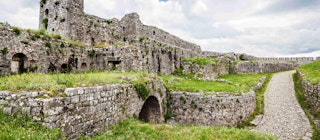
Marubi National Photography Museum
Ebu Bekr Mosque

Shkoder Lake
This expansive lake, the largest in the Balkans, forms a natural boundary between Albania and Montenegro. You can rent a bike in Shkoder to get there, or catch a bus to the western edge of the city and walk the remaining five kilometers on foot. Not far from the border with Montenegro is the Lake Shkoder Resort. This resort also maintains a campsite right on the shore, offering chalets and tent rentals. Albanian Peaks in the distant background frame this beautiful lake. You can hire kayaks there or go on a hiking trip around the beautiful perimeter of the lake.Mes Bridge
This lovely bridge, built in 1750, will bring you back in time and give you plenty of chances for great pictures. The environment is almost idyllic, framed by the hills of the Maranai Nature Park. The beautiful evergreen vegetation line the banks of a shallow river which draws swimmers in summer. The Mes Bridge, at 100 meters, is Ottoman Albania’s largest river-crossing bridge. People have been crossing the river at this spot for almost as long humans have been here. This bridge served as a trade route between Shkoder and Pristine in Kosovo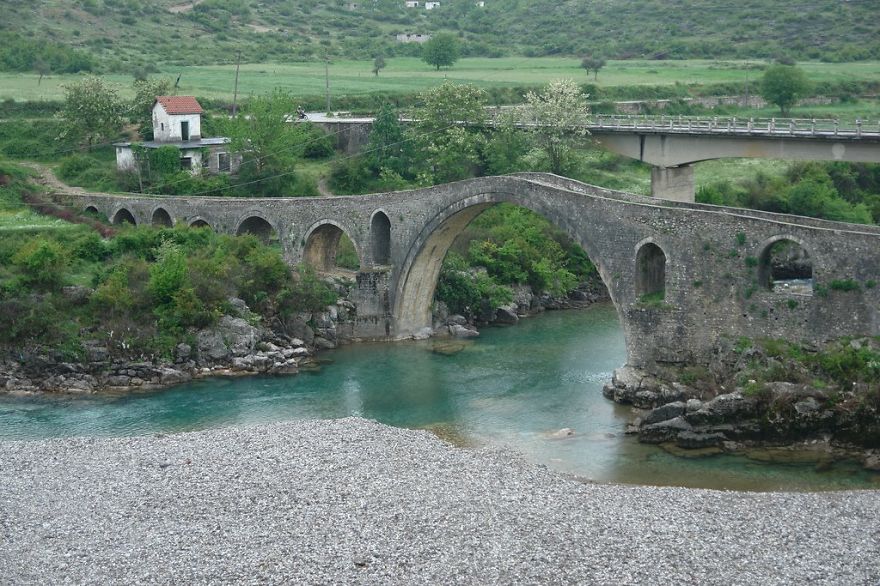
Sofra
Durrës
Amphitheatre of Durrës
Durrës Archaeological Museum

Sneak a peek at The Albanian College
The Albanian College Durres is one of those colleges which actually makes you want to go back to school! The impressive building looks more like a museum or theatre than a place of education. If the doors are open make sure to sneak a quick peek inside too to see the equally impressive interi
Stroll past the walls of Durres Castle and spot the Venetian Tower
As you make your way down from the Amphitheatre of Durres to the seafront, make sure to admire the old city walls which make up Durres Castle. The walls were built in the late 5th century and after several repairs throughout history still stand today, making them the city’s most prominent Roman remains.The main part of Durres Castle is a structure called the Venetian Towerwhich now homes a trendy bar with seating on the roof giving great views over the city and water.The Venetian Castle

Zog's Villa of Durrës
Royal Villa of Durrës, also known as Zog's Villa of Durrës was the summer villa of King Zog in Durrës, Albania.It was used as the summer palace by the Albanian Royal family during the reign of the Monarchy and still remains a symbol of the Monarchy in the City.It was restored to Leka Crown Prince of Albania in 2007. The restoration process was accepted and approved by the Albanian lands commission, following all the legal procedures without contest. The Palace was a gift given by the Durrës business community as a sign of prosperity to King Zog. Although in 2012, Artan Lame declared in the Media that the Palace was built by the Italian government.
Walk down the promenade to Ventus Harbor
Venture out into the Adriatic sea (well just a little bit) by walking down the seafront’s pier-like structure which leads to the uniquely located Ventus Harbour hotel and its public restaurant and bar. From the end, there is a great view looking back across the city from a very different angle than you would find elsewhere.Relax on Durres beach
After a busy day of exploring the vibrant city of Durres, it’s time to head slightly south to the gorgeous Durres beach for some much-needed relaxation time. Durres beach is the biggest and most visited beach in Albania, lining the seafront of the city itself. Heading to the beach on a sunny day, with its golden sand and shallow blue waters, is certainly one of the most popular things to do in Durres for both the locals and tourists.There are large stretches of public beach, as well as private areas owned by the beachfront hotels where you can hire sunbeds for the day even if you’re not a guest.Vlora
Discover the best top things to do in Vlore, Albania including Independence Monument, Zvernec Monastery, Bora Bora Beach, Ali Pasha Castle, Kanine Castle, Muradie Mosque, National Museum of Independence, Ethnographic Museum, Vlore, Acquamarina Spa & Wellness Center, Travel Guide Albania.
Restaurants in Vlore
INDEPENDENCE MONUMENT
It is a monument that shows the indipence day of Albania. It has a very interesting story.Tourists can stay there to take a photo,but nothing else.
Sheshi Pavaresia, Vlore, Albania
ZVERNEC MONASTERY
Zvërnec Island is an island within the Narta Lagoon in southern Albania.The island is nearly all covered with tall pine trees and is just east of a much smaller island. It is 430m in length and has a maximum width of 300m. Zvërnec Island is connected to the mainland by a 270m long wooden bridge.The island is a tourist attraction because it contains the well preserved 13th-14th century Byzantine Zvërnec Monastery.
Near the island lies the village that bears the same name. The island has an area about 9 hectare,The surroundings are awesome, a natural reserve with a lake and the monastery is on an island on this lake (there were flamingos on the lagoon). The monastery and the bridge to the island are very picturesque, worth seeing it.
BORA BORA BEACH,ALBANIA
It was ok. Nothing specialy nice restoran on the beach . Many choice of clasic food . Waiters friendly but they can warn me that pomes is near food which I order . I order again because i did not know that it is near main food .
ALI PASHA CASTLE
Some couple hundred meters of stone path up to the castle. Entrance to the castle in late SEP 2016 was completely free and unsupervised.
However the interior was nearly all dark (although it was a sunny daytime) and it was difficult to see your steps. Nice views from the vast upper level.
I hope the goverment would protect also this piece of history better as the visits have caused already some damage. The castle is nice and rather beautiful but nothing too special for a person who has visited earlier somewhat bigger and more impressive european Castles / fortresses. If you are close by I recommend to visit – otherwise, from longer distances, no need to bother.
When you go to Vlora, you must go to Kanina village, to see the amazing view of the see from there, and the Canina castle is another attraction not to lose. From the castle you can see the other side of the mountain. There is no guide to tell something about the story of the castle, but I liked the view. The restorant in Canina village “The balcony of Vlora” is closed. Its difficult to find a place to eat, you must try the restaurant at the end of the village, at the end of the street.
MURADIE MOSQUE
Few steps from the centre and monument of independence a nice mosque from second half of the 16th century. It is one of hthe few who survived the communist era, when Albania was officially declared to be an atheist state and a lot of churches of all religions were destroyed. It consists of a prayer hall and a minaret IUt is attributed to Sinan, an architect of Albanian origin who was important mosque builder in turkish Ottoman Empire. Nice place to visit. .
NATIONAL MUSEUM OF INDEPENDENCE
This is an interesting museum particularly because some of the rooms are exactly as they were when the ministers who claimed Independence in November1912 used the building as their headquarters.
ETHNOGRAPHIC MUSEUM, VLORE
Try stepping back to a time when museums were not all eye candy. This museum lays out its 300 objects depicting the peoples’ lives on the floor or on a bench. Everything is helter-skelter. But you can make out a strange looking tobacco cutter, an eel fork, or a carved wooden wool bobbin. You’ll ogle at the full sheepskin winter cloak hanging on one wall. To keep the sword arm or shepherd’s crook arm free Albanian mountain men wore this heavy cloak slung over the left shoulder. Upstairs you’ll see an array of gorgeous 100-150 year old heavily embroidered folk costume pieces. These objects are displayed in the Patriot’s Club, a house used for meetings leading to Albania’s independence from the Ottoman Turks (1912). It is the real Albania.
Gjirokastra
The Castle
The castle is open all year round (April to September 09:00 to 19:00, October to March 09:00 to 17:00 ) with an admission price of 200 Lek/1.5o €. The castle has been the nucleus of Gjirokastra, with most of its population living within its walls until the Old Bazaar Quarter (Pazar i Vjetër) developed outside its northern gate in the 15th century. The first fortifications were probably built since the 5th century BC when Epirus was a battleground between Illyrians, Macedonians and Roman forces. A bigger fortress was erected by the Despotes of Epirus under Byzantine auspices in the 12th and 13th centuries. During Ottoman times the castle was progressively enlarged and improved until Ali Pasha of Tepelena gave it its present shape by adding the clock tower and its southwest extension in 1811-1812, making it the second largest castle in the Balkans. Through a 12 km aqueduct he brought drinking water from the mountains. The castle housed a garrison in the 19th and a prison in the 20th century. Its last administrative buildings were taken down only after 1968
The Gjirokastra Museum
Gjirokastra Museum was opened in 2012 and housed in one of the most beautiful galleries of the Castle. It relates the history and culture traditions of the city and its surroundings area from the prehistoric times until nowadays, through archeological and historical objects, archive materials and oral histories. It is considered one of the most modern museums in the country with a special design and combination of the narratives and images.
National Museum of Armaments
Originally opened in 1971, the National Museum of Armaments is located in what was once the part of the prison. The current displays cover Albanian arms from independence in 1912 to the end of World War II, and most of the museum is dedicated to the Partisan struggle against the Italian and German occupation forces from 1939 to 1944.
The prison
The entrance to the prison is in the first gallery of the National Armaments Museum. Completed in 1932, the prison was used by King Zog’s regime followed by the Italian and German occupation forces during the Second World War, and finally the communist regime until 1968. The only part of the prison that is accessible to visitors was developed as a museum by the communist regime in the 1970s. Ask the armament museum staff to orientate you. Bektashi Turbe (tomb)
Situated to the right about 50m inside the main gate you will see a small building tucked into the walls of the castle amidst a lovely garden. It contains the remains of two Bektashi Babas.
The American Airplane
A U.S. military training plane was forced to land near Tirana in 1957 having technical problems. The pilot was returned to the US a short time later, but the plane, which the communists maintained was a spy plane, was brought to the castle as a trophy of the Cold War.
The festival Stage
The stage was erected in the 1980s and has for some years been the home of the Albanian National Folk Festival, held every four years (last held in 2015). During the year the stage is used by the municipality on public holidays to present music and dance events.
The Bazaar of Gjirokastra
Until the mid 20th century Gjirokastra was an important market centre for agricultural products from the region, leatherworking and woodworking. The combination of administrative positions and vast feudal land holdings provided the basis for the wealth of the town. By the 1580s the town had more than 400 dwellings, and in the 17th century Memi Pasha, the Ottoman governor, laid out a new commercial quarter with a mosque, on the present site, with all roads coming together at the ‘neck’ of the bazaar. This first planned town centre was almost completely destroyed by fire and rebuilt in the 1750s. Another fire in 1912 resulted in a further reconstruction, for which steel beams were first used to support the shop fronts.Nowadays the area is the heart of the touristic interest with many shops, souvenirs, artisan activities and bars and restaurants.
Ethnographic Museum:
The ethnographic museum is situated in the Palorto Quarter, which is the best preserved district in the old town of Gjirokastra. The Ethnographic Museum stands on the site of the home of Enver Hoxha, communist dictator of Albania from 1944 to 1985. The museum building was constructed in 1966 after the original house was destroyed by fire. The reconstruction was designed as a model traditional Gjirokastra house with many classic features known to have been copied from particular houses around the city. From 1966 to 1991 the building served as the Anti-Fascist Museum. In 1991 the exhibits from the previous Ethnographic Museum were moved into this space. The house has four floors, all of which are open to the public. The rooms are arranged as they would have actually been used and are decorated with numerous household items, folk costumes and cultural artefacts typical of a wealthy Gjirokastra family of merchants or Ottoman administrators living in the 19th Century. The Ethnographic museum is open all year April to September 08:00 to 12:00 and 16:00 to 19:00 daily. October to March 08:00 to 16:00
The Babameto House – Centre for Culture and Heritage
The Babameto House is an elegant 2 stores house situated in the very heart of the Bazaar. In fact it is composed of two buildings, dated 1885 and 1887, housing separate branches of one family. The outside symmetry is not repeated inside, hinting at western ideas, with less emphasis on collective living. After 10 years of dereliction the building is restored in 2013. Open for the public, it is used as a good example of revitalization and modern use of a typical Gjirokastra house. Babameto serves as a Centre for Culture and Heritage, housing culture and tourist events, as well as an accommodation facility and a hostel. The property is under the administration the the Gjirokastra Foundation Entrance: free (A donation box is available for contributions).
The Zekate House
The best surviving example of an ottoman tower house in Gjirokastra’ (prof. dr Emin Riza) The fortified tower houses – known as kullë (kullë is Turkish for tower) belonged to wealthy individuals such as administrative officials or merchants. They all follow a basic layout: a secure stone lower storey topped by a wooden gallery where the principal rooms for an extended family are located. Embrasures are set in the walls to help defend against attacking enemies. The Zekate House is a particularly grand example of the typical kullë (tower-house). Constructed in 1811-1812 it has twin towers and a great double arched façade. The views of the town and the river valley below are spectacular. There are three floors; the ground floor contains storage rooms, a high ceilinged kitchen and the cistern. There is a central staircase which winds upwards through the building. The first floor has two rooms that were used as living quarters for branches of the family, while the third floor has a grand reception room and two other smaller rooms. The principal room is very typical of the grandest of these dwellings with frescoed walls, a carved ceiling and an ornate fireplace. This level would have been shared by the whole family. At the centre of floor at the top of the staircase there is a wooden balcony overlooking the town. This has a raised section on which the head of the family would sit, meet his guests and watch what went on in the city below.The Zekate house is open for visitors. A family member will come out and unlock the door.
Skënduli House
Skender Skenduli, another wealthy land owner, built the Skendulate House (22) in 1823 during Gjirokastra’s greatest period. The house had two courtyards and is unique in having both an internal and external staircase. It used to have 46 chimneys, indicating the wealth of the Skënduli family. The main guest room (oda), in particular, is distinguished by its decorated ceiling and wooden poles, just as the many other wooden decorations throughout this house give it an unrepeatable value. The great number of loopholes and the sophisticated locks of the main doors bear witness of its defensive function.It is open for visitors; there are not yet exact times of opening hours. A family member will appear always to guide you inside.
Kadare House
Kadare House is the newest attractions in the historic city. It belongs to the family of Ismail Kadare who was born here in 1936. Ismail Kadare is the most well known Albanian writer internationally. Destroyed by fire in 1997, the house is now being fully reconstructed and offers several of exhibitions mostly related with the figure of the writer.Opening hours from April to October from 09.00-19.00
The Fico House is of special interest because, built in 1908, it allows us to trace the evolution of the Gjirokastra house up to the beginning of the 20th century, when this type of house was no longer built. The architectural treatment of the interior and exterior presents new developments: the interior becoming simpler, the exterior being enriched with new elements. The front has two arched gates, and this house is the only one in Gjirokastra that has elaborate wooden ornaments of the pediment and window frames.Not set any opening hours schedule and no entrance fee applied, however, donations and contributions are appreciated.
Apollonia
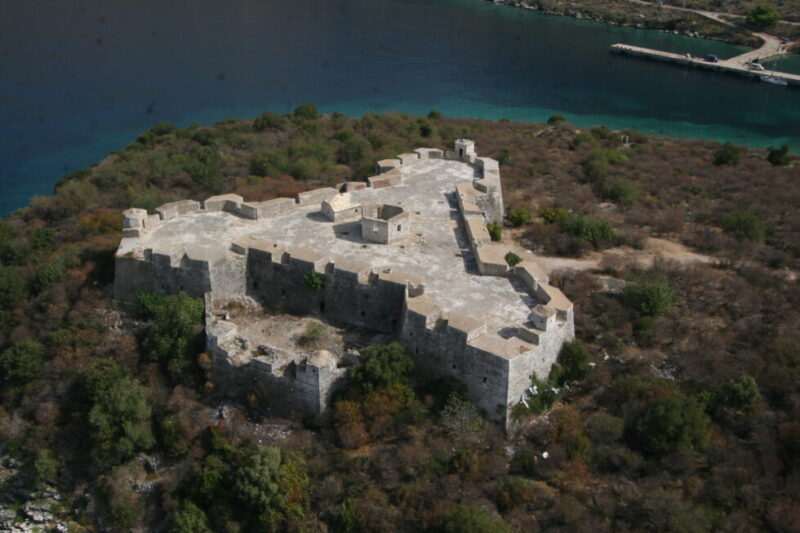
Apollonia was an ancient Greek city located on the right bank of the Aous river (modern-day Vjosë). Its ruins are situated in Fier County, next to the village of Pojani (Polina), in modern-day Albania. Apollonia was founded in 588 BCE by Greek colonists from Corfu and Corinth,[2] on a site where native Illyrian tribes[3] lived and was perhaps the most important of the several classical towns known as Apollonia. Apollonia flourished in the Roman period and was home to a renowned school of philosophy, but began to decline in the 3rd century AD when its harbor started silting up as a result of an earthquake. It was abandoned by the end of Late Antiquity.
The name of the city is mentioned among the modern bishoprics of the Orthodox Autocephalous Church of Albania (Apollonia and Fier). Apollonia is also a titular see of the Latin Church.





